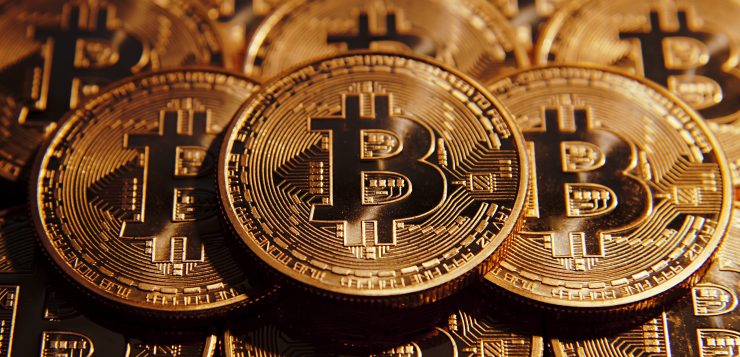I’ve only written about Bitcoin on this blog once before, four years ago. To me, it was a sideshow, although I admit that it’s underlying technology – blockchain – is rich with potential.
My opinion about Bitcoin – and now its johnny-come-lately imitators and competitors – remains largely unchanged. In accordance with Carl Menger’s subjective theory of value, the market prices of “crypto-currencies” still will depend on how much value individuals choose to attach to it. Also, Bitcoin and the others still have the speculative potential to produce mind-boggling profits.
On one crucial fundamental point, though, I now disagree with my earlier assessment of Bitcoin and its cousins: I no longer believe that one can legitimately call them “currencies.” That is a fallacy, a falsehood, or an inaccuracy, and I’ll let you debate the proper semantics. My point is this: The primary definition of a currency – “money” – is that it serves a society as the generally accepted, routinely used medium of exchange. Neither Bitcoin nor any other so-called “crypto-currency” does that or is capable of that in their current stage of development.
Perhaps you have seen The Wall Street Journal video that vividly illustrates the defects that render Bitcoin impractical (at least for now) as a currency: The service charges for processing small transactions can nearly double the cost of an item purchased; the time it takes to process a transaction varies unpredictably, thereby making transactions cumbersome and inconvenient; and since few vendors use the real-time dollar-Bitcoin exchange ratio, the dollar price of a transaction may be far different from what one thinks one is paying. Yuck! (Note: North Korean agents and other hackers are showing that Bitcoin has other defects, such as not being as secure as advertised, but I am limiting my discussion to the defects that disqualify Bitcoin from being characterized as money.)
Actually, a better way of stating Gresham’s Law is that when something is more valuable in a nonmonetary market than it is as money, it will migrate to its nonmonetary market and cease to be used as money. Since Bitcoin has largely migrated from the monetary marketplace, it raises a key question: If Bitcoin isn’t money, then, what is it? Unlike gold and silver, which had centuries-long track records of being valued for various nonmonetary uses, Bitcoin has no pre-existing nonmonetary uses. Neither does it have a track record that provides any reliable parameters for its exchange value.
Bitcoin and the other cryptos have value for those seeking to move or store wealth outside the banking system and hopefully out of view from the prying eyes of government. And, like gold and silver, they have value for those who want insurance against the depreciation of government fiat currencies. It seems to me, though, that the primary demand for cryptos today comes from speculators. People desire and purchase Bitcoin and similar devices for the simple reason that the market price of Bitcoin has soared, and many people believe that it will soar more in the months and years ahead. For many of its holders today, Bitcoin amounts to a digital casino in which shrewd financial sharks will devour the wealth of naive novices and pathological gamblers.
In accordance with the free-market axioms that the customer is always right, and that profit-seeking enterprises need to provide what people are demanding, the financial industry is scrambling to get on board the crypto train. Popular financial newsletter publishers are rushing new newsletters to market, dispensing advice on investing or speculating in cryptos. Likewise, financial institutions are making new markets for the trading of cryptos and derivatives thereof.
Cryptos have become an investment mania reminiscent of the dot-com boom of the late ‘90s. Some think the recent parabolic rise in the price of Bitcoin signals the beginning of the end of a crazy bubble. While that is possible, the recent price spikes may instead mark the end of the beginning (the opening act in a long-term crypto drama). It is possible that the crypto mania will play out similarly to the dot-com craze, with many of the cryptos failing and becoming worthless while one or a few of the crypto competitors flourish. Just as many believed that there could be no longevity to a business that didn’t earn profits (Amazon in its early years) so today, many believe that a “currency” that doesn’t function like a currency can’t survive. I’m not so sure about that. As long as people continue to value Bitcoin for whatever reason – parking wealth outside official channels, insurance against pathetic fiat currencies, speculation, etc. – it will have value. And given the limited supply of Bitcoin, its market price, though subject to great volatility, may eventually enrich its holders and make its creator(s) (the individual or individuals pseudonymously known as “Satoshi Nakamoto”) to supplant Amazon’s Jeff Bezos as the richest wealth-holder(s) in the world.
To repeat my conclusion of four years ago: “What follows is going to be interesting. Good luck to all.” And be careful.
Read more at:
https://www.forbes.com/sites/markhendrickson/2018/01/11/the-bitcoincrypto-currency-fallacy/2/#23b8bab72d0d







